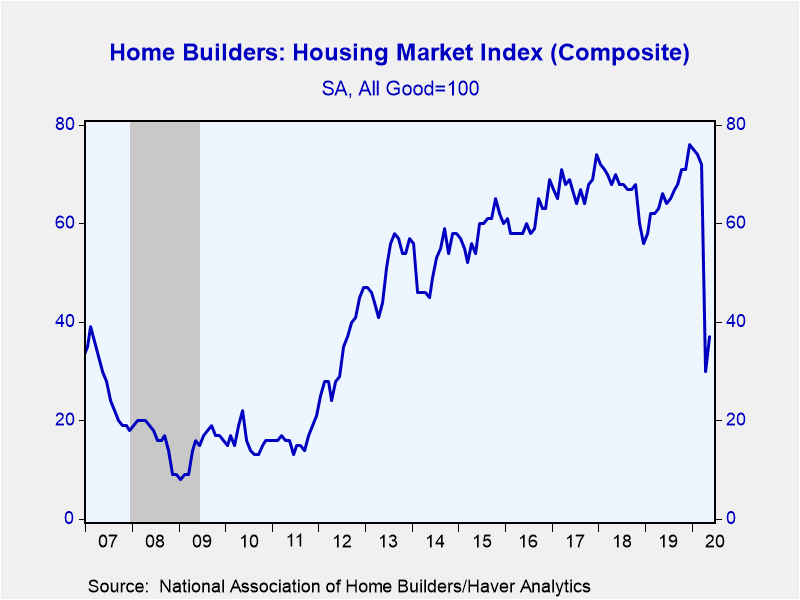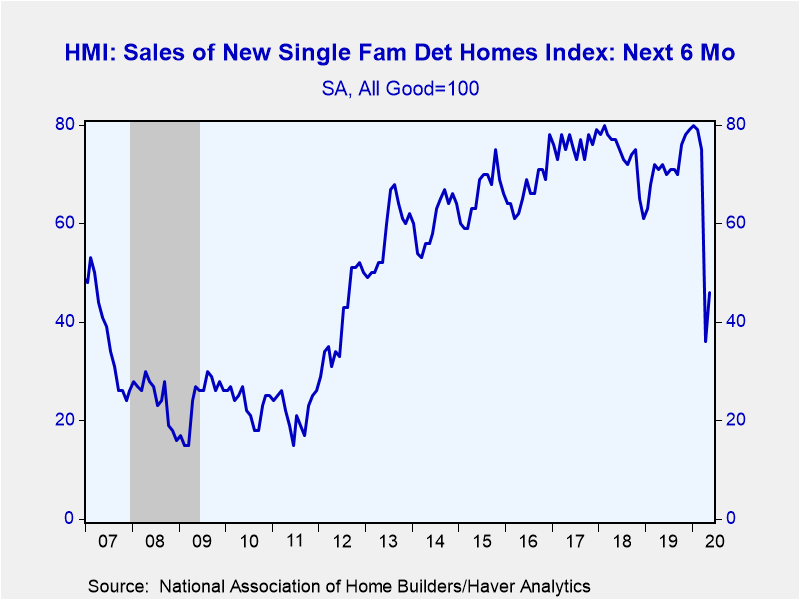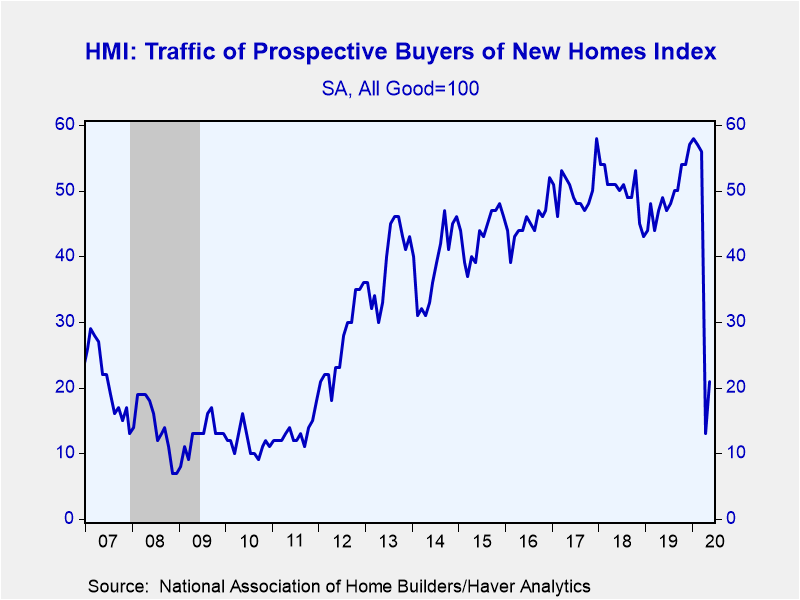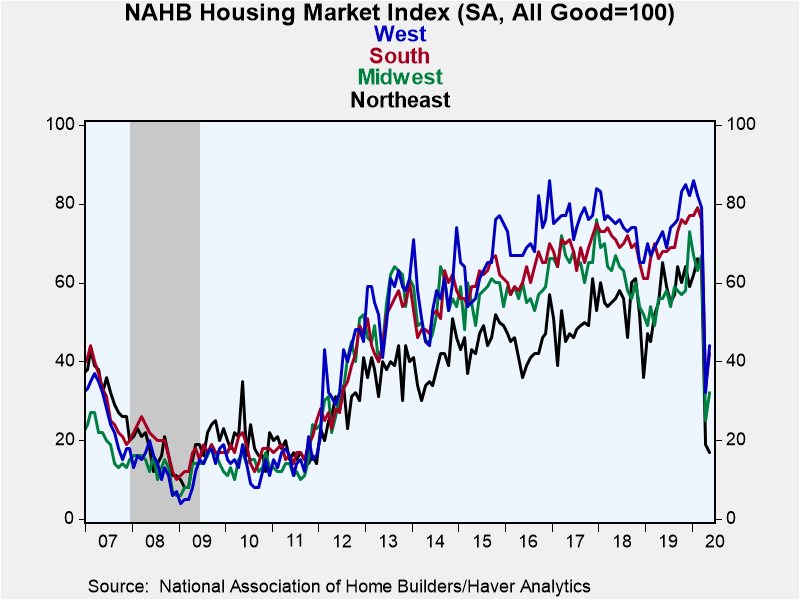 Global| May 18 2020
Global| May 18 2020U.S. Home Builder Sentiment Stabilizes at Depressed Level
by:Tom Moeller
|in:Economy in Brief
Summary
• Housing market remains notably weak. • Few are looking to buy a home. The Composite Housing Market Index from the National Association of Home Builders-Wells Fargo moved up to 37 during May (-43.9% y/y) after collapsing to 30 in [...]
• Housing market remains notably weak.
• Few are looking to buy a home.
The Composite Housing Market Index from the National Association of Home Builders-Wells Fargo moved up to 37 during May (-43.9% y/y) after collapsing to 30 in April. It was 72 in March. The figure remained nearly the lowest level in eight years. A reading of 35 had been expected in the INFORMA Global Markets survey. The NAHB figures are seasonally adjusted. Over the past 15 years, there has been a 71% correlation between the y/y change in the home builders index and the y/y change in new plus existing home sales.
The index of present sales conditions improved to 42 (-41.7% y/y) in May after falling sharply to 36 from 79 in March. The index of expected conditions in the next six months rose to 46 (-36.1% y/y). It fell to 36 in April from 75 in March. The index measuring traffic of prospective buyers also rose m/m after collapsing in April.
Regional readings all remained depressed. The index for the Northeast fell 10.5% (-73.8% y/y) after dropping 70.3% in April. In each of the other regions, indices improved slightly m/m after falling sharply in April, although year-to-year comparisons were down. The index for the Midwest was off 42.9% y/y, while the West remained 39.7% lower y/y and the South was down 38.2% y/y.
The NAHB has compiled the Housing Market Index since 1985. It reflects survey questions which ask builders to rate sales and sales expectations as "good," "fair" or "poor" and traffic as "very high," "average" or "very low." The figures are diffusion indexes with values over 50 indicating a predominance of "good"/"very high" readings. In constructing the composite index, the weights assigned to the individual index components are: 0.5920 for single-family detached sales, present time, 0.1358 for single-family detached sales, next six months, and 0.2722 for traffic of prospective buyers. These data are included in Haver's SURVEYS database.
| National Association of Home Builders | May | Apr | Mar | May Y/Y | 2019 | 2018 | 2017 |
|---|---|---|---|---|---|---|---|
| Composite Housing Market Index, SA (All Good=100) | 37 | 30 | 72 | -43.9% | 66 | 67 | 68 |
| Single-Family Sales: Present | 42 | 36 | 79 | -41.7% | 72 | 73 | 74 |
| Single-Family Sales: Next Six Months | 46 | 36 | 75 | -36.1% | 72 | 74 | 76 |
| Traffic of Prospective Buyers | 21 | 13 | 56 | -57.1% | 49 | 50 | 50 |
Tom Moeller
AuthorMore in Author Profile »Prior to joining Haver Analytics in 2000, Mr. Moeller worked as the Economist at Chancellor Capital Management from 1985 to 1999. There, he developed comprehensive economic forecasts and interpreted economic data for equity and fixed income portfolio managers. Also at Chancellor, Mr. Moeller worked as an equity analyst and was responsible for researching and rating companies in the economically sensitive automobile and housing industries for investment in Chancellor’s equity portfolio. Prior to joining Chancellor, Mr. Moeller was an Economist at Citibank from 1979 to 1984. He also analyzed pricing behavior in the metals industry for the Council on Wage and Price Stability in Washington, D.C. In 1999, Mr. Moeller received the award for most accurate forecast from the Forecasters' Club of New York. From 1990 to 1992 he was President of the New York Association for Business Economists. Mr. Moeller earned an M.B.A. in Finance from Fordham University, where he graduated in 1987. He holds a Bachelor of Arts in Economics from George Washington University.










